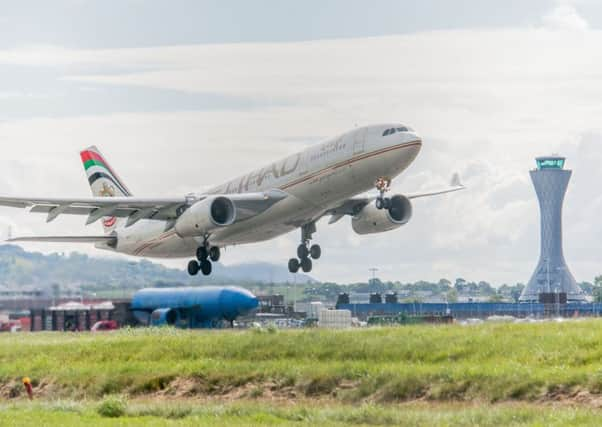Russell Imrie: Moving transport into the future


Tomorrow, SEStran is holding a major event. Transport for Regional Growth will address all aspects of regional transportation. It includes perspectives from industry, national, regional and local government, sustainable transportation organisations, transport planning and major transportation infrastructure projects. The event aims to bring together stakeholders representing all aspects of regional transportation including; public transport, freight, road, rail, sea and air to discuss the future of regional transport planning.
South East Scotland is already a major hub for transportation of all kinds. Edinburgh airport is currently the busiest in Scotland, with more than 10 million passengers passing through annually, using 29 airlines that serve more than 120 destinations. The airport also shifts 36,000 tonnes of cargo annually.
Advertisement
Hide AdAdvertisement
Hide AdMeanwhile, rail usage increased by half over the ten-year period between 2001 and 2011, with most of those journeys taken to or from Edinburgh. The considerable amount of investment made into rail infrastructure; not least the opening of the new Borders rail link, is likely to see this trend increase. Sea transportation is also an important factor. The Forth is a major gateway for sea freight, with an estimated 27 million tonnes of bulk shipping passing through the estuary annually and in 2014 alone 2,814 vessels called at ports on the Forth, which is also home to the Rosyth to Zeebrugge freight ferry service; Scotland’s only direct sea link with mainland Europe.
The region’s population is growing fast. In the ten-year period between 2003 and 2013 South East Scotland’s population grew by more than 105,000; an increase of over 7 per cent, while Edinburgh experienced a rise of 9.5 per cent. This represents a major increase in the need for transportation, whether for accessing employment, education or leisure. The capital is already a major focus for commuters, with half of all commuting journeys made to, from or within the city. South East Scotland is forecast to experience a further substantial increase in population and employment opportunities. Excellent news, but these developments also bring potential problems; not least a major increase in the need for transportation and its inevitable related potential problems; traffic congestion – particularly from cars, and the accompanying pollution on routes into and around the capital. There is also an urgent need to coordinate better access to transportation and ensure connectivity between transport modes, as communities grow and develop.
Transport is clearly a vital part of the infrastructure of any region and absolutely central to the wellbeing of its economy. It is of prime importance, whether as a means of transporting goods, people commuting to work, recreation and places of education, or facilitating important local industries like tourism. It is also a major employer in its own right. Edinburgh airport employs more than 2,500 people, not only directly engaged with running the airport, but in the many peripheral businesses.
This number is certain to increase as the airport grows. Recent investments include a new £25 million landside terminal extension and security hall and £19m south east pier extension. A planned new £125m five-year investment programme will include additional retail outlets – creating more jobs – in the landside terminal and departure lounges, improved check-in and immigration facilities. Road transport is also a major employer. A single bus company in the region employs over 1,400 people at its depots and thousands more work in rail, road freight and many other types of transportation.
In short, transport is a key area of the regional economy, so it is absolutely essential that we get it right. At Transport for Regional Growth, SEStran is bringing together some of the top brains dealing with transport planning, funding and implementation of major infrastructure projects and strategic development. It also includes senior managers from all areas of transportation, representatives of regional business and elected members of local, regional and national government. Their aim is to present their own unique perspectives, highlight problems and opportunities and ask hard questions. Our aim is to create an event where the importance of transport for the growth of the economy of any region – not only South East Scotland – is explored in detail by the people most involved in its development.
Transport for Regional Growth is a major opportunity to hear from the key people involved in developing regional transportation. They will explain the financial, political and structural issues involved in growing a system that will meet the needs of regional economies, now, and in the future. I urge anyone who has an interest in transportation issues within the region to attend.
Come along and listen. Ask questions and find out how the future of regional transportation is being shaped today.
• Councillor Russell Imrie is chair of SEStran